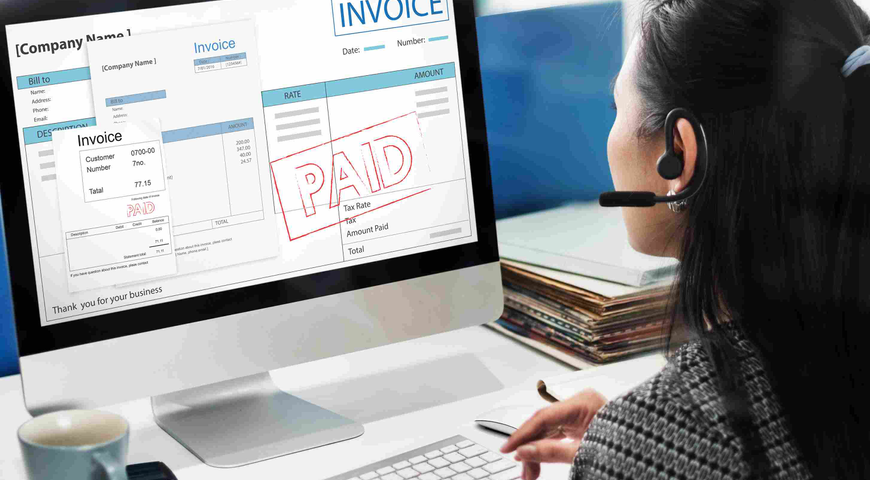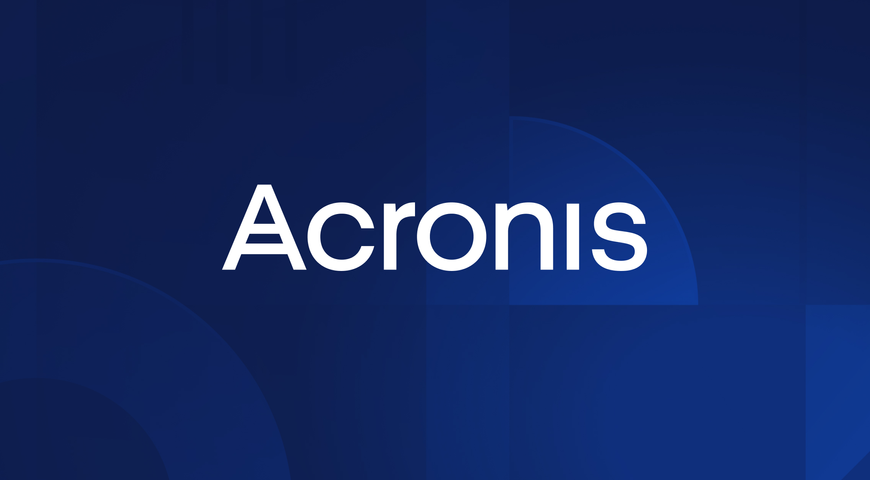
Automated invoice processing isn't just a nice-to-have feature for MSPs; it's a necessity because it can transform and streamline the process of managing their billing operations and client relationships. Suppose your company still relies on manually creating invoices or struggles with inconsistent billing cycles. In that case, then you're probably losing more time and money than you can imagine while frustrating your clients with delayed and sometimes inaccurate billing.
MSPs need automated invoicing systems to stay competitive, reduce administrative overhead, maintain the cash flow that supports their business growth, and, most importantly, help them expand their client base.
In this guide, we'll explore the top five benefits that auto invoicing brings to your MSP operations, showing you exactly how this technology influences and streamlines your billing processes, improves client satisfaction, and, last but not least, boosts your bottom line in ways you might not have considered.
5 core benefits of auto invoicing systems
The Top 5 core benefits of implementing auto invoicing software in your MSP organization are:
1. Time efficiency: Automate repetitive tasks and focus on growth
Every MSP owner knows that their team spends hours each week preparing and sending invoices to clients by manually pulling ticket data, then calculating specific rates, formatting line items, and chasing manager approvals. As your client base grows, this process becomes even more exhausting and repetitive, which of course leads to decreased team productivity, an increased risk of mistakes in the invoice generation process, and sometimes unsatisfied clients.
Through automated invoice processing, you ensure that common time-wasters like manual data entry, double-checking calculations, correcting outdated contract terms, and formatting invoice templates for each client will no longer be a concern. Thus, your team will have the opportunity to focus on their daily tasks and put more effort into making your clients happy through improved service delivery or by applying the right upselling tactics to boost the company’s revenue.
Simply put, auto invoicing is a must for every successful MSP. Instead of copying data from one tool to another, invoice automation software directly pulls information from your PSA or time-tracking system, allowing for the automatic generation of recurring invoices, routing invoices for approvals, and syncing them with your accounting systems or payment gateways with minimal human intervention.
2. Improved accuracy and fewer billing errors
Manual billing often leads to mistakes such as missed billing hours, miscalculated rates or incorrect client details. These issues are not just embarrassing but can also delay payments, create client frustration, and even harm your relationship with clients.
On the other hand, when your MSP company is equipped with reliable and efficient invoice automation software, all billing data flows directly from your ticketing or PSA system. There is no need to second-guess time logs or manually enter figures. Indeed, the system ensures accurate itemization, standardizes invoice processing, and automatically aligns billing with contract terms.
When implementing invoice automation, your can remain confident that every invoice accurately reflects the services delivered and eliminates human errors. Additionally, integrating PSA tools further enhances this accuracy by auto-filling labor entries, service items, and billable time into each invoice with precision.
3. Faster payments and better cash flow
When you delay sending invoices to your clients, it consistently has a negative impact on your revenue. The longer the delay in billing, the more your cash flow suffers. Why is that? Because manual invoicing holds up this process, especially when dealing with multiple contracts, approval layers, or disconnected systems.
With automated invoice processing software, things look totally different because you can send invoices immediately after ticket closure, schedule billing based on project milestones, and, of course, trigger invoice generation automatically. With the integrated payment gateways, your clients receive and pay invoices in a streamlined process that requires little to no follow-up. It is really that simple and effective.
The results really speak for themselves, faster payments, stronger cash flow, and fewer outstanding receivables. This is particularly important when your MSP experiences aggressive growth, because automation directly supports reinvestment into staff, technology, and expansion without relying on slow payment cycles.
4. Enhanced client experience and transparency
One thing is for sure: clients expect clear and timely invoices that accurately reflect the services delivered. Vague descriptions or late billing raise concerns and can lead to payment delays or service disputes, which is not in the best interest of your company.
Automated invoice systems can help you meet those expectations by generating professional, detailed invoices that break down the exact services rendered. Using consistent invoice templates and accurate billing data from your PSA enables you to create a flawless billing process that builds trust and reinforces your brand's professionalism.
Keep in mind that many systems also include client-facing portals where clients can access, download, and even pay invoices at their convenience. So, by scheduling recurring invoices and integrating with SLA tracking, your billing becomes not only more transparent but also aligned with client expectations for accountability and clarity.
5. Scalability: Build a foundation for sustainable growth
Manual billing may work when your client base is small, but it quickly breaks down as your MSP scales. With more clients come more contracts, diverse billing models, and increasing complexity that overwhelms teams using spreadsheets and fragmented processes.
Auto invoicing removes this complexity entirely. Whether you manage project-based contracts, recurring services, or hybrid models, automation software gives you the tools to standardize invoice management across all scenarios. You can easily configure billing rules, apply them to different client segments, and process multi-location or multi-currency invoices with confidence.
This operational efficiency enables small teams to handle larger workloads while minimizing overhead, and crucially, it helps MSPs get paid faster by streamlining the entire billing-to-payment cycle. It creates the structure your MSP needs to scale without compromising on accuracy, service delivery, professionalism, or cash flow stability.
How does auto invoicing work for MSPs?
Auto invoicing helps MSPs streamline their billing operations by creating an entirely automated and seamless workflow that directly connects their service delivery systems to their financial processes. This way, it eliminates the manual data entry that consumes countless hours of work each month. The automation software works by monitoring multiple data sources across the MSP's infrastructure, automatically triggering invoice generation based on specific predefined criteria that align with your client contracts and service agreements.
What data sources do auto invoicing tools pull from?
Invoice automation systems leverage artificial intelligence to extract invoice data from your organization’s most critical sources, creating invoices that accurately reflect services rendered with unprecedented accuracy. For instance, accounting systems provide client billing rates, contract terms, and payment histories, while your ticketing platform supplies detailed service records, time logs, and project completion status. The automated invoice processing software utilizes a specific algorithm to connect to your asset management tools and capture hardware deployments, software licensing and recurring service charges that need billing integration.
Then it processes data validation protocols to ensure accuracy before processing invoices, thereby reducing human error while maintaining consistency across all client accounts. Furthermore, your automation software can even pull vendor costs from purchase orders to accurately calculate markup pricing for pass-through expenses.
How to integrate PSA systems, like Acronis PSA
Acronis PSA integrates through API connections that sync invoice data in real-time, allowing your automated systems to access ticket details, time entries, and project milestones without any human intervention. Simply put, your PSA becomes the central hub where invoicing work originates, providing accurate information that directly feeds into your invoice automation workflow.
Examples of triggers: Time logs, project milestones and ticket closures
When using automated invoice systems, they respond to specific triggers that match your billing models and client requirements. For example, time log completion automatically generates billing entries for hourly services, while project milestone achievements trigger percentage-based billing for larger implementations. Closing tickets in your PSA can immediately create invoices for break-fix work, ensuring you accurately bill clients for the services provided.
Recurring invoices are generated automatically based on contract schedules, while one-time project work triggers the creation of automated invoices when your team marks deliverables as complete. This systematic approach ensures consistent billing cycles and improved accuracy across all your client accounts.
How to choose the best auto invoicing solution for your MSP?
To choose the best auto invoicing solution for your MSP, you must understand how your company functions to find a billing system that aligns with your service model, integrates with your technology stack, and provides accuracy, control, and speed at scale. The ideal solution must eliminate manual data entry, minimize human error, and seamlessly handle everything from invoice creation to invoice approvals.
What should I look for in an automation platform?
When choosing between different vendors, look for flexibility to ensure that the automation software can adapt to your billing structure, regardless of whether you bill hourly, by milestone, or through recurring invoices. Pick a solution that offers you customized invoices, approval workflows, and integrations with your accounting systems.
Every MSP needs strong validation and the ability to automate complex business rules, including systems that flag exceptions when billing anomalies occur. Furthermore, the right solution for you must support consistent formatting using invoice templates, flag discrepancies before the invoice arrives at the client's inbox, and, of course, offer audit-ready reports to simplify compliance.
Such a solution must automate each step of creating and processing invoices, with the main goal of helping your team escape the vicious cycle of spending countless hours on manually generating each invoice. The idea is to find a solution that speeds up the process through intelligent automation, leaves no space for mistakes, and frees up time for your team to focus on more client projects. This will help your MSP increase its client base and achieve revenue growth with no additional expenses.
Key features MSPs should prioritize
Ensure the solution supports automatic retrieval of invoice data from ticketing systems, purchase orders, and time logs. Also, built-in reporting capabilities, streamlined invoice management, and compatibility with payment gateways should all be part of the package. Last but not least, focus on scalability, because as your client base grows, the software must keep pace without requiring additional headcount or workarounds.
Questions to ask vendors before investing
If you have already picked a solution that you think meets your company's needs and requirements, the next step is to contact the vendor and ask them the following questions:
- Can the software integrate with your PSA and ticketing systems?
- Does it support multi-client and multi-location billing?
- How does it handle exception scenarios and approve invoices?
- What happens when automated invoicing goes wrong?
- Will it allow you to create and manage electronic invoices securely without violating the regulatory frameworks you must strictly follow?
Of course, you can add other questions to the list, but if you get a positive answer to the aforementioned questions, then this is the right software that will help your MSP grow with the speed and accuracy you expect.
Why Acronis PSA is built for MSP billing needs?
Acronis PSA is designed specifically for MSPs and IT service providers, with the main goal of eliminating the manual burden across their teams. It offers full integration between ticketing, contract terms, time tracking, and most importantly, billing. The software shows exceptional results in reducing billing delays through real-time invoice automation, enforces predefined rules, and automates invoice generation without sacrificing accuracy or flexibility.
With Acronis PSA, your team can stop chasing spreadsheets and start focusing on growing revenue with a reliable, fully integrated billing solution that successfully eliminates the challenges and bottlenecks in your current processes.
Security and compliance in automated invoicing
Most automated invoicing software equips
your MSP with a feature that encrypts sensitive information both in transit and
at rest, to protect your client's financial data from unauthorized access while
maintaining industry standards for cybersecurity compliance. The best invoice
automation platforms use multi-layered security protocols to safeguard data
fields containing payment details, contract terms, and proprietary business
information that, if leaked, could damage your MSP's reputation.
How auto invoicing supports compliance with financial regulations
These automated systems create immutable audit trails that document every transaction, modification, and approval in your billing workflow. This, of course, helps your MSP meet SOX, HIPAA, GDPR, and other regulatory requirements. As a result, manual processes are eliminated while automatically generating detailed logs of who accessed invoice data, when changes occurred, and what approvals were granted. Having such detailed logs on your side helps you provide complete documentation when auditors require it during compliance reviews.
Role-based access and audit trails
By using invoice automation software, you will be equipped with granular permission controls that successfully restrict access to sensitive billing functions based on your employee roles. This ensures only authorized team members can approve invoices, modify rates, or access client financial records.
On the other hand, exception handling protocols will automatically flag unusual activities. At the same time, comprehensive capabilities will let your team monitor performance and detect potential security breaches before they impact your clients' data.
This will help you comply with strict regulatory frameworks by maintaining detailed logs that track every action within your billing system, creating a reliable record of all invoicing work that supports both internal controls and external compliance requirements.
Common invoicing mistakes auto invoicing helps you avoid
One of the most common invoicing mistakes is when your technicians complete a particular project or task but, for one reason or another, forget to log time entries or submit incomplete ticket documentation that leaves billable services unrecorded in your PSA system. It's challenging to remember and track every single call, phone consultation, or remote fix, which can create gaps that cost your MSP thousands in lost revenue.
With automated software, such mistakes can't happen since it eliminates these oversights by automatically capturing time logs from ticket closures and ensuring every completed service and task gets converted into billable entries without requiring any manual intervention.
Wrong client rates or outdated pricing
Contract rate changes that are frequently updated across all billing systems, which can result in billing enterprise clients at basic service rates or applying old hourly charges that haven't reflected market increases in months.
Invoice automation prevents such scenarios since it pulls current pricing directly from your contract management system, preventing costly under-billing that damages profit margins while ensuring clients never receive incorrect charges that create disputes.
Duplicate or missed invoices
Without automated systems to track billing status, your team may inadvertently bill the same project twice or entirely overlook invoicing for completed work, leading to either client frustration or revenue loss that directly affects the cash flow and operational efficiency your MSP depends on.
Auto invoicing for different MSP billing models
Automatic invoicing can be implemented in different MSP billing models, since the software is designed to align with a variety of billing structures and deliver the best results. To make things clearer, let's explore how the software works with each pricing model.
Fixed-fee vs. time-and-materials billing
Your automation software can automatically create regular invoices for fixed-fee contracts according to preset schedules. For time-and-materials billing, it generates invoices from logged hours and expenses in your PSA system.
Fixed-fee pricing models facilitate regular billing schedules, making it easier to plan cash flow. In contrast, time-and-materials billing requires immediate recording of billable hours to ensure revenue is recognized promptly without delay.
Retainer models and milestone billing
Retainer agreements work perfectly with automated systems that track invoices against prepaid balances and have the capability to alert your team when client credits approach their limit, ensuring continuous service delivery without payment interruptions.
On the other hand, milestone billing automatically generates invoices when project phases reach completion status in your project management tools, eliminating the need to manually monitor deliverable progress or remember billing triggers.
Hybrid models and service bundles
Hybrid pricing models that mix fixed monthly fees with variable labor costs need invoice automation that can clearly separate different billing components into distinct line items while keeping the processing time for each service category efficient. This is why your MSP need an invoice generator that can handle multiple billing frequencies within single client relationships, processing both scheduled recurring invoices for managed services and on-demand billing for project work with early payment discounts offered to enterprise accounts.
How auto invoicing adapts to each use case
Automated invoice processing software is created using customizable business rules to accommodate your specific billing models in various formats, automatically applying the correct pricing structure, billing frequency, and payment options based on contract terms stored in your client management system. This way, you can use different billing approaches for specific clients, giving you flexibility to meet their needs and requirements and expand your client base without worrying whether you are charging them appropriately for your services.
How does Acronis PSA simplify invoicing for MSPs?
Acronis PSA is one of the best available solutions on the market, but how exactly does the software help MSPs simplify their invoicing process? You will find the answer below.
Unified ticketing, time tracking, and invoicing
Acronis PSA integrates all core workflows, such as tickets, time logs, contracts, and billing, into one console, so when your team closes a ticket, time entries feed directly into the billing system. Consequently, you don't need one separate tool for tracking work and another one for generating invoices making the software not only reliable and efficient but also cost-effective.
Real-time syncing of billable hours and contract terms
The platform automatically pulls actual billable hours and purchase orders from your Acronis RMM or PSA integrations. It gathers the most important information, like contract rates, service levels, and labor expenses, and syncs instantly, where, of course, the greatest benefit is that it eliminates manual data entry and ensures invoices always reflect current terms accurately.
Auto-generated invoice templates
When billing time, services or product usage, Acronis PSA applies your company's templates and payment terms. The software seamlessly calculates taxes, discounts and payment gateways, including Stripe and PayPal. Thus, you get professional, branded invoices ready to go without extra steps.
Integration with accounting platforms
Another great benefit provided by Acronis PSA is its ability to connect with popular accounting systems like QuickBooks Online, FreshBooks, Sage and Xero. It pushes invoices, client information, vendor information, and payment events automatically, with the primary goal of helping your accounting team view updates in a timely manner and reduce their manual workload.
With all these handy, effective, automated features, your team saves hours by avoiding the repetitive manual billing tasks and significantly reduces invoice processing time from hours to minutes. Moreover, your company boosts cash flow with faster, error-free invoicing while achieving the necessary profitability and invoice performance through built-in KPI dashboards and reports. Simply put, Acronis PSA delivers a complete billing solution that is specifically built for the needs of MSP organizations.
Best practices for implementing auto invoicing in your MSP
Successfully implementing auto invoicing software requires a well-planned approach that protects your existing operations while maximizing the benefits of automation. The painful truth is that your MSP company can't afford billing disruptions during the transition, so following reliable and proven implementation practices ensures smooth deployment without negatively impacting your cash flow, client relationships, or your ability to track spending patterns. The following four best practices will help you roll out automated billing systems efficiently while avoiding the most frequent pitfalls that derail MSP automation projects.
1. Clean up existing billing data first
The new automation software requires clean, standardized client records to function effectively, so start by auditing contract terms, billing rates, and contact information to eliminate inconsistencies that could generate incorrect invoices. Next, ensure that all duplicate client entries are removed, update terminated employee contacts, and double-check service descriptions across all accounts to ensure your automated invoice software has reliable source data for avoiding potential errors.
2. Set clear internal billing rules and processes
It is highly important to define specific workflows for invoice approvals, establish reusable invoice templates for different service types, and document business rules that govern when automated invoice generation should trigger based on project completion or time log submission. This is necessary because your team needs clear protocols for handling exceptions, reviewing invoice information before delivery, and managing incoming invoices from vendors to maintain operational consistency.
3. Start with one client segment or project type
Implementation must begin with your most straightforward billing relationships, such as fixed-fee managed service contracts that generate recurring invoices, before expanding to complex time-and-materials or milestone-based billing arrangements. This staged approach will allow your team to manage invoices effectively while learning the system capabilities without overwhelming your operation or risking billing errors with high-value clients.
4. Regularly review automation rules and outputs
In business, there is no such thing as a one-time process, so schedule monthly reviews to monitor the performance of your invoice automation workflows and analyze invoice receipt confirmations, payment timing, and any exceptions that require manual intervention to continuously optimize your automated processes. Regular audits help identify inefficient processes and ensure your automated invoicing work maintains accuracy as client relationships and service offerings evolve.
Metrics to track after switching to auto invoicing
After successfully switching from manual to auto invoicing, it is mandatory to measure the impact of this change. This requires you to track specific performance indicators that clearly show improvements in billing efficiency, accuracy, and cash flow management across your MSP organization. Thankfully, your automation software generates detailed analytics that help you quantify the ROI while identifying areas where manual tasks still create bottlenecks in your billing workflow, slowing down your business growth.
Here are the metrics you must track:
- Invoice accuracy rate: Track the percentage of invoices that require zero corrections after their automated generation. Anything above 96% accuracy can be accepted as success, since it demonstrates how automated systems eliminate potential human error compared to previous manual processes. This metric will give you a clear view of whether your data validation rules and business rules are configured correctly.
- Days sales outstanding (DSO): To successfully track this metric, you must monitor how quickly your clients pay after their invoices arrive. Keep in mind that successful automation typically reduces DSO by 15-25% through faster delivery and integrated payment gateways. If your software shows lower DSO, this means it will directly improve your cash flow position.
- Average time to invoice: Measure elapsed time from service completion to invoice receipt by clients, targeting same-day or next-day delivery for most billing scenarios.
- Payment cycle time: Monitor the duration from invoice approval to receipt of payment. Shorter cycles indicate optimized workflows and better coordination between your invoice management platform and accounting systems.
- Billing error resolution time: Measure how fast your team resolves invoice-related issues. Reducing this metric is a direct result of clean invoice data, automation software, and clearly defined business rules that standardize invoice approvals and reduce back-and-forth communication.
FAQ: Auto invoicing for MSPs
What is auto invoicing, and how does it work for MSPs?
Auto invoicing is the use of automation software that helps your organization generate and send invoices without needing manual work every billing cycle. By using such software, you can set specific predefined rules that pull invoice data from time logs, tickets, and service records to generate an invoice that is 100% representative of the work you put in delivering a service. This way human errors are avoided, the billing process is speeded up, and it ensures your company gets paid faster while keeping everything traceable with a unique invoice number for each transaction.
How secure and accurate is automated invoicing?
Automated invoicing software is highly secure and reliable since it uses encrypted data transmission, machine learning for fraud detection, strict access controls, and audit logs with the main purpose of protecting your company's and clients sensitive information. They reduce manual data entry and take a huge amount of pressure off your team's shoulders, this way delivering more consistent results with minimal to no manual efforts. When used correctly, automated invoicing keeps your AP process secure, clean, and under control.
Can I customize automated invoices for different clients?
Yes, you can fully customize automated invoices to align with your client's specific needs depending on their projects. By using such software, you can use different invoice templates, add unique payment terms, or even modify the layout based on service types. The most reliable and proven tools let you include custom fields such as project names, services rendered, or unique identifiers like the invoice number, and many more for better clarity and tracking.
Do I need a full PSA platform to use auto invoicing?
It really depends. While full PSA systems offer deep integration, many auto invoicing tools work just fine as standalone solutions or alongside other systems your MSP already uses. This means that you can connect them with basic accounting systems, time tracking tools, or ticketing platforms to pull data from there and trigger accurate invoicing. This equips your company with the needed flexibility to scale without being locked into a bulky or expensive PSA setup.
Will automation replace my finance team?
Absolutely not. Auto invoicing is created to help your finance team and reduce repetitive manual tasks, but it does not entirely replace your employees. Despite the high accuracy that such software provides, your finance team still needs to review key details, set business rules, and ensure client relationships stay healthy. Simply put, automation handles the boring stuff, like processing invoices or matching invoice numbers.
Can I still review invoices before they are sent out?
Yes you can review invoices before they are sent out. Nowadays, most automation software offers an invoice approval feature, which allows you or your team to review, edit, and approve each draft before it's sent to the client. You can even configure workflows where only specific types of invoices are being sent automatically, while the rest must go through human review and approval before reaching your clients' inboxes.
Conclusion
Manual invoicing is killing your MSP's growth potential without any doubt. Every single hour your team spends on repetitive billing tasks is an hour stolen from innovation and client service. You know that you can't afford that if you want to keep your company profitable. So why still use manual methods when an efficient tool like Acronis PSA exists and can help you leave this bad practice behind?
Here's what changes when you implement Acronis PSA. First, invoice generation happens automatically; no more copying data between different systems. The platform pulls information directly from your service tickets and time logs, creating accurate invoices in seconds instead of hours. Human errors? They become extinct. Furthermore, double-billing disappears, missed charges vanish, and your cash flow accelerates because automated processes completely eliminate delays.
But Acronis PSA delivers even more: it unifies service desk management, project tracking, inventory control, and financial reporting. They all work together seamlessly. On top of that, native integrations with Acronis RMM and top-notch cybersecurity tools mean you can manage everything from a single, user-friendly, and intuitive console. Sounds great, right? With this tool, your team can resolve issues faster, and your accounting team can process payments effortlessly through Stripe and PayPal integrations. QuickBooks, Xero, and other accounting platforms sync automatically.
The results you will see are significant reductions in billing time, faster payment cycles, and improved billing accuracy. Your team will stop drowning in boring, repetitive manual tasks and start driving growth. Client satisfaction soars because you provide them with invoices that are accurate, detailed, and professional, leading to more on time payments.
Stop letting manual processes steal your team's valuable time and slow your MSP's revenue growth. Your competitors are already automating their way to higher profits and happier clients. The choice is simple: continue wasting precious hours on manual invoicing or join the ranks of successful MSPs who've transformed their operations with intelligent automation.
Take that small step that brings you great results and discover how Acronis PSA can increase your MSP's profitability and efficiency.
About Acronis
A Swiss company founded in Singapore in 2003, Acronis has 15 offices worldwide and employees in 50+ countries. Acronis Cyber Protect Cloud is available in 26 languages in 150 countries and is used by over 21,000 service providers to protect over 750,000 businesses.



